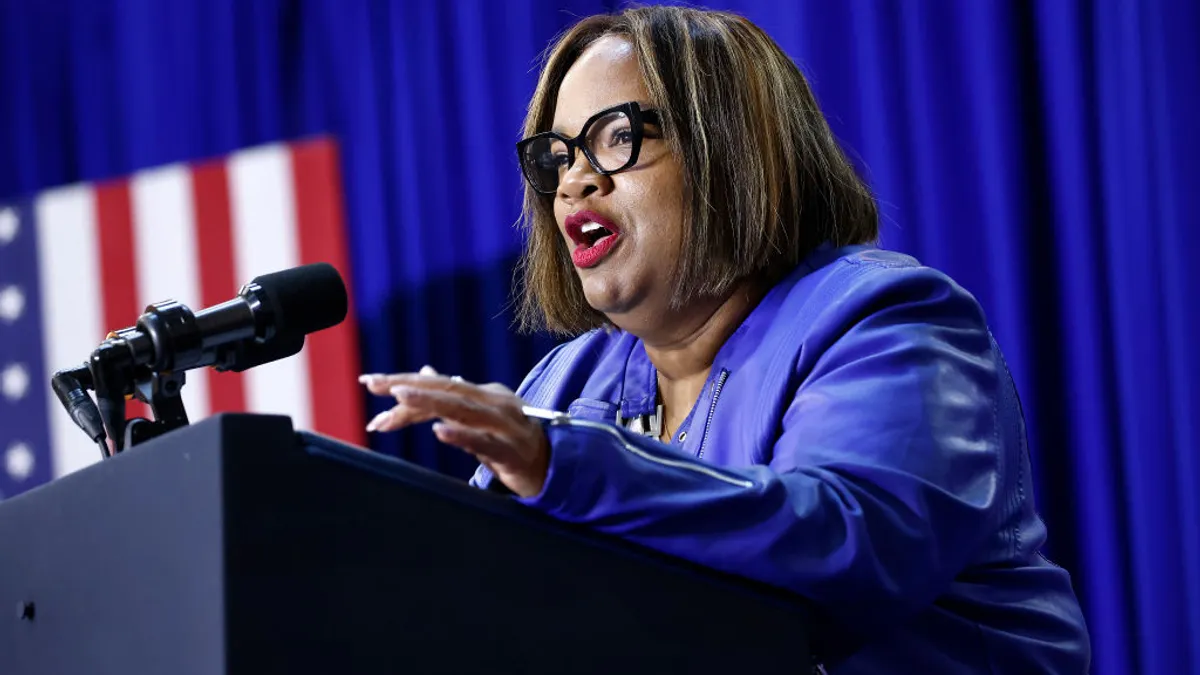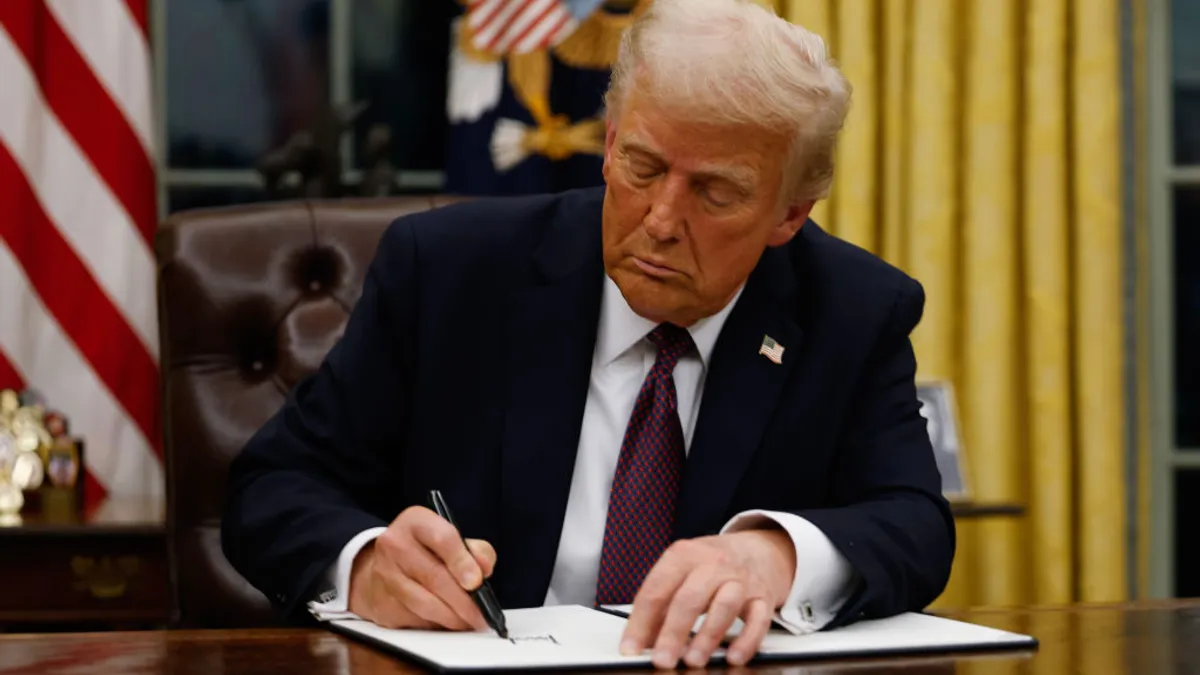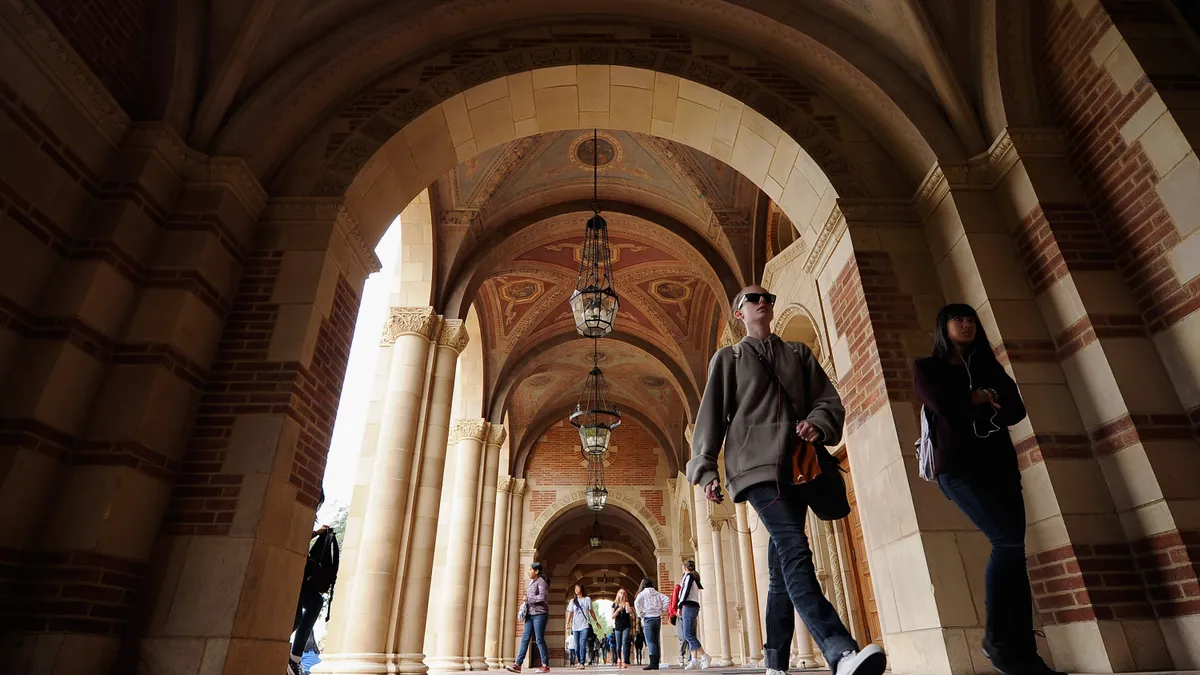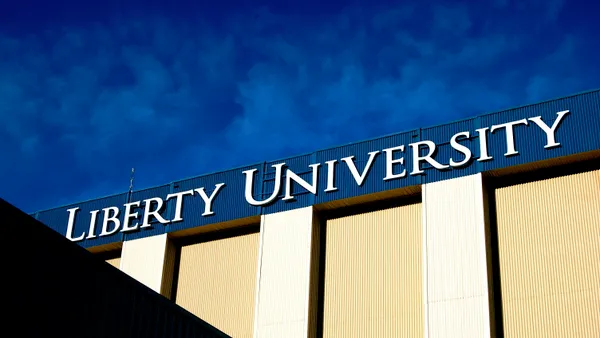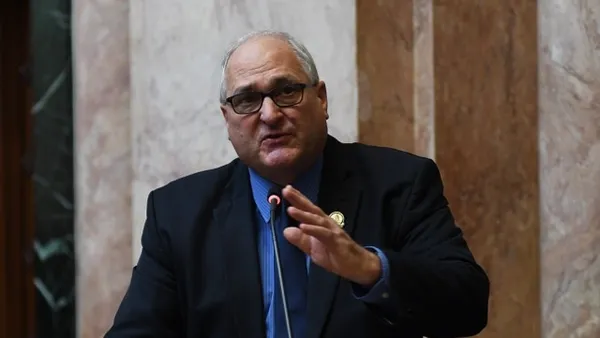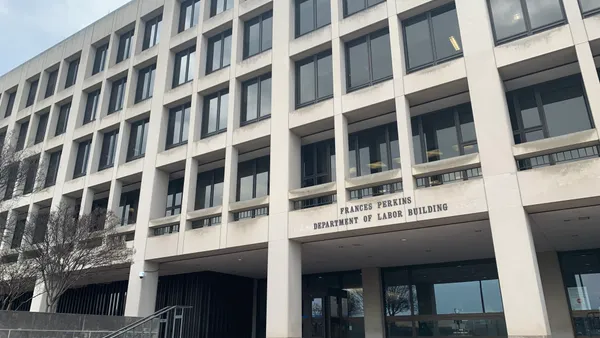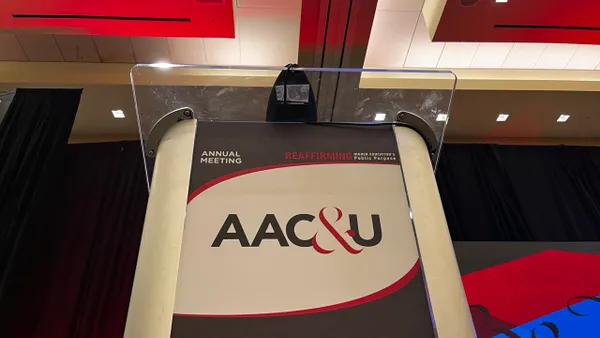The roomful of union professionals seemed almost giddy with energy: friendly heckles, inside jokes, plenty of laughter. They were gathered for the Dr. Martin Luther King Jr. Civil and Human Rights Conference, held this year in Austin, TX.
The press announcement had come already on Wednesday: The AFL-CIO and the Service Employees International Union (SEIU) have joined forces. Two million SEIU members will join 13 million AFL-CIO members to create a coalition of 15 million workers to "push back on union busting," the announcement said.
Each of the two unions, which split back in 2005, oversee college chapters that represent educational workers and unionized graduate students. And both frequently partner with the American Federation of Teachers, a major union which represents 300,000 higher education workers.
Their merger has largely been considered a sort of reunification of the larger AFL-CIO union.
Now, the two organizations were holding a livestreamed roundtable with organizers in the union space and the two organizational presidents, moderated by Melissa Harris-Perry. Before the discussion, SEIU President April Verrett addressed the audience first, then AFL-CIO President Liz Shuler.
SEIU President: Better futures for North American workers
Matching the joyous energy of the audience, Verrett expressed optimism at the combination of both advocacy groups.
“Today, I am more hopeful than I have ever been about the future of our labor movement. Today, I am more committed than I have ever been to grow our solidarity and our strength. Today, I am more resolute than I have ever been to unleash a new era of worker power,” she said, acknowledging the wide range of industries that SEIU members occupy in the U.S., Puerto Rico and Canada.
“We are determined to grow our union and every union, because every single worker should have the chance to join a union, no matter where they work,” Verrett added.
A cause Verett highlighted was the goal of raising the floor for wages.
“It is time for at least $25, if not $30 an hour or more. It's past time, and we want every single worker to be able to join the union and to bargain — not just worksite by worksite, but across entire industries,” Verett said. “It's time to raise standards and create opportunities because good, safe jobs, work that we can all be proud of, that supports our families.”
AFL-CIO President: A thread through history
Meanwhile, Shuler noted the poignancy of celebrating the combination during an MLK conference.
“We come together every year to talk about how connected our labor movement is to the civil rights movement and the fight for racial justice,” she said. “I think it's very fitting that we are down here in the south for this historic announcement.”
She added: “Dr. King spoke a lot about the attempts that were being made by big business — maybe certain politicians — to divide working class people, to divide us by race, to divide us by religion, by orientation, by what we did for work. And for a long time that strategy succeeded, didn't it?”
A notable moment for the future
The union combination announcement comes two weeks before President-Elect Donald Trump takes the Oval Office. A huge point of discussion was whether this administration would support unions, as well as the question mark surrounding union leadership, everyday members and their respective sentiments toward Trump.
While Teamsters president Sean O’Brien spoke at the Republican National Convention, the AFL-CIO has previously condemned Trump for his anti-labor track record.
Notably, the National Labor Relations Board continues to be a battleground for employees, employers and workers’ rights advocates.
Independents and Republicans blocked Lauren McFerran’s bid to remain a NLRB board member in December. President Biden picked Gwynne Wilcox to replace McFerran as chair, though Trump will likely nominate a replacement chair when he takes office.



